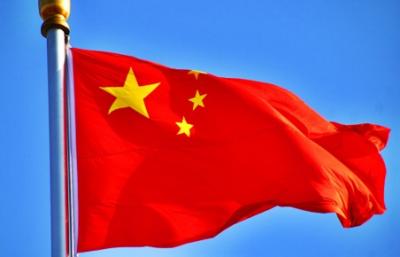World’s top rating agency, Moody’s Investors Service in its report said that China’s three-child policy to support the declining fertility rate was unlikely to dramatically change its birth rate. Share market stocks related to birth and fertility companies listed in Hong Kong and mainland China tanked sharply after Moody's statement.
China announced on 31 May that married couples may have up to three children in a major shift from a limit of two after recent data showed a dramatic decline in births in the world's most populous country. According to the Communist Party’s Politburo statement, the move is to “improve China’s population structure and preserve the country’s human resource advantages”.
The census, released on 11 May, showed that the population grew at its slowest rate during the last decade since the 1950s, to 1.41 billion, fuelling concerns that China would grow old before it gets wealthy as well as criticism that it had waited too long to address declining births. The census may have prompted the latest change, recorded 12 million births in 2020, the lowest since 1961. The census said there were 264 million in the 60 and over age group, up 5.44 per cent since 2010 and accounting for 18.70 per cent of the total population. After the one-child policy, China’s fertility rate fell from 2.75 in 1979 to 1.69 in 2018.
Also read: China's 3-child policy faces resistance
The slowing birth rate in China has also led to concerns of labour shortage. News agency ANI quoted a report from Capital Economics which said that China's workforce is expected to shrink by more than 0.5 per cent a year.
Fearing a population explosion, in 1979 China implemented its one-child policy, which succeeded in curbing population growth but also led to coerced sterilisations and sex-selective abortions that exacerbated a gender imbalance as many parents preferred male children.
Moody's said the reform highlighted the risk of ageing across emerging markets in Asia. "Although China's new policy allowing couples to have up to three children could support fertility, it is unlikely to dramatically change the national birthrate, meaning that ageing will remain a credit-negative constraint", Moody's said.
The decision to allow families to have up to three children was met with scepticism in China, with people expressing doubts on social media as to whether it would make much difference, and calls for details on what promised "supportive measures" would be available.
Also read:China allows couples to have 3 kids as birth rate falls and population goes grey
While China has now changed its child birth policy, most couples are not keen on having more than one child due to rising costs, lifestyle changes and other socio-economic contours.
In fact, social media participants cited the high cost of raising children in urban China, where housing can be expensive and children undergo private tuition in addition to public schools amid a fiercely competitive education system, as deterrents to having kids.
“Demographers agreed that China's population has come to a critical turning point as the country's population ages rapidly while the overall growth rate slows, and that the country needs to speed up the removal of the family planning policy, and draft new retirement plans and social policies to lower the cost of raising children,” an article published by the Chinese news organisation Global Times said.
Women in China already face a widening gender gap in terms of workforce participation and earnings and have borne a growing share of childcare duties as state-supported childcare has declined, according to a report last year by the Peterson Institute for International Economics.
According to some demographers, the pandemic too contributed to suppressing births, adding to problematic fundamentals including a declining number of women of childbearing age, ANI highlighted.
China had a fertility rate of just 1.3 children per woman in 2020, recent data showed, on par with ageing societies like Japan and Italy and far short of the roughly 2.1 needed for replacement level. "People are held back not by the two children limit, but by the incredibly high costs of raising children in today's China. Housing, extracurricular activities, food, trips, and everything else add up quickly," Yifei Li, a sociologist at NYU Shanghai, told Reuters.
China scrapped its decades-old one-child policy in 2016, replacing it with a two-child limit to try to avoid the risks to its economy from a rapidly ageing population. But that failed to result in a sustained surge in births given the high cost of raising children, especially in cities.
The policy has also been criticised by human rights bodies. Amnesty International said governments have no business to regulate child birth.
Also read: China: ‘Three-child policy’ still a violation of sexual and reproductive rights
“Rather than ‘optimizing’ its birth policy, China should instead respect people’s life choices and end any invasive and punitive controls over people’s family planning decisions. Raising the limit from two children to three would bring China no closer to meeting its human rights obligations, head of Amnesty International’s China Team, Joshua Rosenzweig, said in a statement.




















